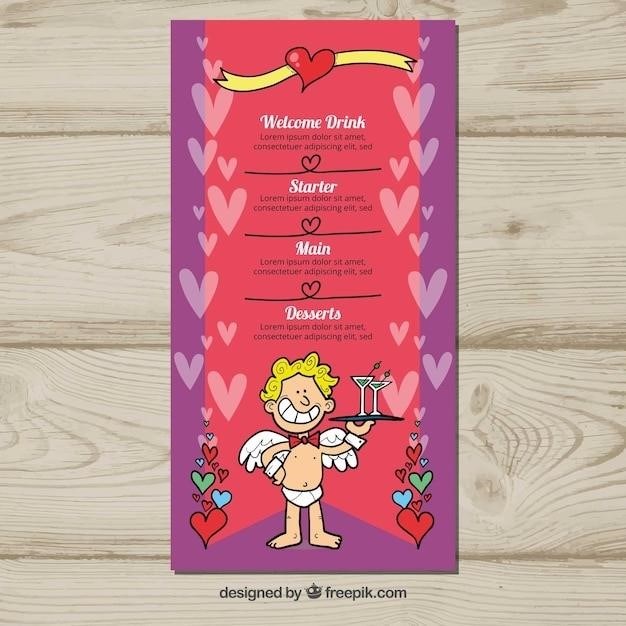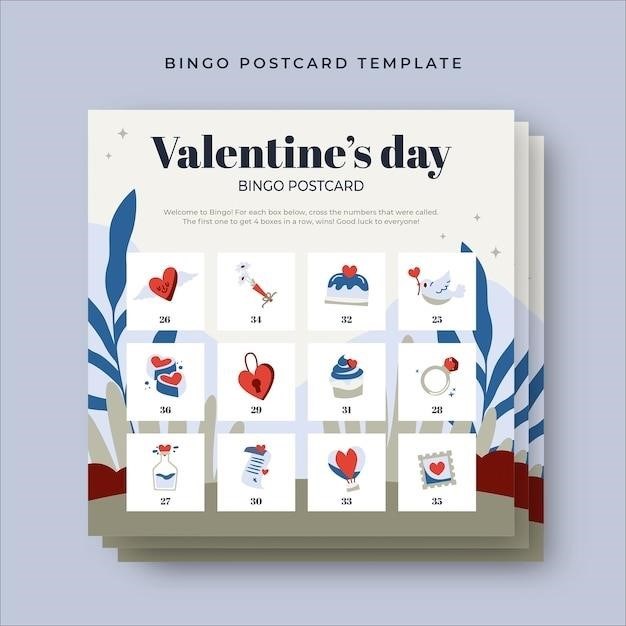Understanding the 5 Love Languages Quiz PDF
This quiz, based on Dr. Gary Chapman’s framework, helps identify your primary love language. Understanding your love language—whether it’s words of affirmation, acts of service, receiving gifts, quality time, or physical touch—enhances relationships and communication. The PDF offers a concise, insightful assessment.
Dr. Gary Chapman’s Framework
Dr. Gary Chapman, a renowned marriage counselor, developed the revolutionary concept of the Five Love Languages. His framework posits that individuals express and receive love in five distinct ways⁚ Words of Affirmation (verbal expressions of appreciation), Acts of Service (helpful deeds), Receiving Gifts (thoughtful presents), Quality Time (undivided attention), and Physical Touch (affectionate gestures). Chapman’s research revealed that miscommunication in relationships often stems from a mismatch in love languages. Partners might unintentionally express love in a way their significant other doesn’t readily understand or appreciate. This leads to feelings of unlovedness or neglect, even when love is genuinely present. The 5 Love Languages quiz, based on Chapman’s work, helps individuals identify their dominant and secondary love languages, fostering greater self-awareness and improving relational dynamics. By understanding how you best receive love and how others express it, you can enhance communication and strengthen your bonds. The quiz is a valuable tool for individuals, couples, and families seeking to deepen their connections and foster more fulfilling relationships.
The Concept of Love Languages
The core idea behind the Five Love Languages is that individuals experience and express love differently. It’s not about the quantity of love given, but rather the manner in which it’s communicated. Just as people speak different spoken languages, they also have unique “love languages” that resonate most deeply with them. Understanding this concept is crucial for fostering healthy and fulfilling relationships. If someone’s primary love language is “Acts of Service,” for example, they feel most loved when others perform helpful tasks for them, while someone whose primary language is “Words of Affirmation” values verbal expressions of appreciation. A mismatch in love languages can lead to misunderstandings and conflict. For instance, a partner who consistently expresses love through gift-giving might feel frustrated if their partner doesn’t seem to reciprocate the same enthusiasm, not realizing their partner’s primary love language is quality time. The 5 Love Languages quiz helps individuals pinpoint their preferred methods of giving and receiving love, enabling them to communicate more effectively and build stronger, more loving relationships. This recognition fosters empathy and understanding, transforming how partners interact and express affection.
Types of Love Languages
Dr. Gary Chapman’s framework identifies five distinct love languages⁚ Words of Affirmation involves expressing love through verbal compliments, appreciation, and encouragement; Those who value this language feel loved when they hear positive words. Acts of Service signifies showing love through helpful actions and deeds; assisting with chores, running errands, or offering practical support speaks volumes. Receiving Gifts highlights the significance of thoughtful presents, symbolizing love and care. The gift itself is less crucial than the intention and thoughtfulness behind it. Quality Time emphasizes undivided attention and meaningful shared experiences. This involves putting aside distractions and focusing fully on the other person. Finally, Physical Touch encompasses various forms of physical affection, including hugs, kisses, holding hands, and other displays of intimacy. These acts convey love and connection. Recognizing these distinct expressions of love allows individuals to understand how they best receive and give love, leading to improved communication and stronger relationships. The quiz helps identify the dominant love language, providing insight into personal preferences and fostering self-awareness.

Taking the 5 Love Languages Quiz
The quiz presents a series of statements; choose the one that best reflects your preferences. Simple and insightful, it reveals your primary and potentially secondary love languages, offering valuable self-knowledge.
Quiz Structure and Questions
The structure of the 5 Love Languages quiz typically involves a series of paired statements, each representing one of the five love languages⁚ Words of Affirmation, Quality Time, Receiving Gifts, Acts of Service, and Physical Touch. Participants select the statement within each pair that resonates most strongly with their personal experience and preferences. The questions are designed to gauge how individuals prefer to both give and receive love, offering a comprehensive understanding of their individual love language profile. For example, a pair of statements might include “I feel loved when my partner tells me they appreciate me” (Words of Affirmation) and “I feel loved when my partner helps me with chores” (Acts of Service). By carefully considering each option and choosing the one that best reflects their feelings, individuals can gain a clearer picture of how they express and experience love. The quiz often includes a scoring system to determine the dominant love language and any secondary languages of equal or near importance.
Interpreting Your Results
After completing the 5 Love Languages quiz, interpreting your results involves analyzing the scores assigned to each of the five love languages⁚ Words of Affirmation, Quality Time, Receiving Gifts, Acts of Service, and Physical Touch. The love language with the highest score represents your primary love language, indicating the way you most readily experience and express love. A high score in one category suggests that receiving expressions of love in that specific manner strongly impacts your feelings of connection and affection. If two or more love languages receive similar high scores, this suggests you may be “bilingual” in love languages, meaning you value and appreciate expressions of love in multiple ways. Conversely, lower scores indicate love languages that are less significant to your experience of love. Understanding this hierarchy allows you to recognize how you feel most loved and how you can best communicate your love to others. This self-awareness facilitates stronger and more fulfilling relationships, as you can tailor your expressions of love to resonate deeply with your partner’s preferences, fostering deeper connection and understanding.
Primary and Secondary Love Languages
The 5 Love Languages quiz doesn’t just identify a single love language; it helps discern a primary and potentially a secondary love language. Your primary love language, indicated by the highest score, signifies the method through which you most profoundly experience and express love. This understanding is key to knowing how you best receive and offer affection. For instance, if your primary love language is “Words of Affirmation,” compliments and encouraging words resonate deeply, making you feel loved and appreciated. A secondary love language, represented by a score close to your primary score, highlights another significant mode of expressing and receiving love. Having a secondary love language implies that while your primary preference dictates your strongest emotional response to love, you also appreciate and value expressions of love in this secondary style. For example, while “Words of Affirmation” might be primary, “Quality Time” as a secondary love language signifies that undivided attention and shared experiences also hold substantial importance in your emotional landscape. Recognizing both your primary and secondary love languages provides a comprehensive understanding of your emotional needs and preferences in relationships, enhancing self-awareness and communication.

Utilizing Your Love Language Results
Understanding your love language, as revealed by the quiz, empowers you to cultivate healthier and more fulfilling relationships. Armed with this knowledge, you can proactively communicate your needs and preferences to your loved ones, fostering deeper connection and understanding. For instance, if your primary love language is “Acts of Service,” you might express your love by assisting others with tasks or chores. Conversely, knowing your partner’s love language enables you to show love in ways that resonate most profoundly with them. If their primary love language is “Gifts,” thoughtful presents, even small tokens of appreciation, become powerful expressions of your affection. The quiz results serve as a guide, not a rigid rulebook. The key lies in mindful communication—expressing your needs while also actively trying to understand and cater to your loved ones’ preferred methods of receiving love. This reciprocal approach strengthens bonds, reduces misunderstandings, and creates an environment where everyone feels cherished and appreciated. Remember, the 5 Love Languages are tools for enhancing your relationships; use them to build stronger connections based on mutual understanding and affection.
